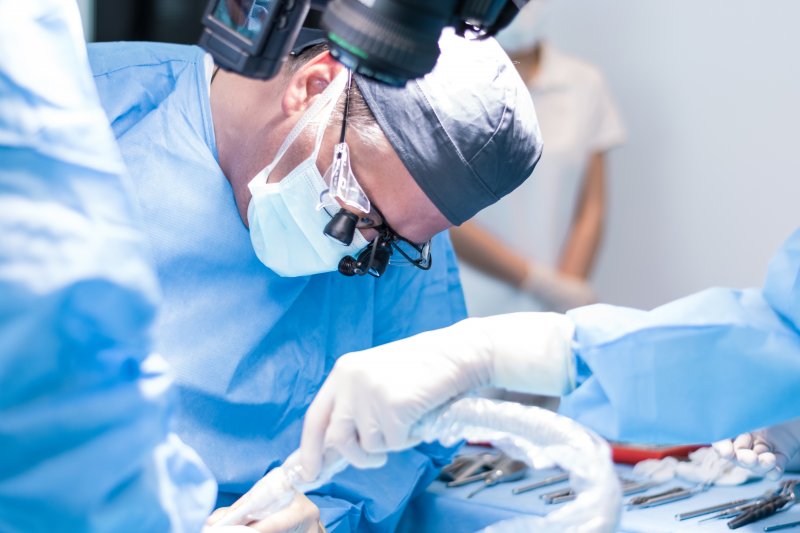
Oral surgery is required if you choose to receive dental implants. The dentist will need to place each post into the designated area of the jawbone to ensure its position and depth will allow for successful osseointegration. But before you reach this phase of treatment, your oral healthcare specialist will need to decide which surgical method to use – computer-guided or traditional dental implant surgery. Read on to learn the difference between the two and why a more technologically advanced approach will produce better outcomes.
Computer-Guided or Traditional Dental Implant Surgery: What’s the Difference?
Implant dentistry is a constantly evolving field. Dentists are adopting new approaches and methods to improve patients’ experiences and outcomes. Although traditional placement was once the only way to receive these prosthetics, a more technologically advanced solution is available. But what makes these two different?
Computer-Guided Implant Placement
Instead of placing dental implants blindly or freehand, dentists can use specialized imaging scanning or a Cone Beam CT scanner to generate a 3D model of your jaw and mouth. This high-resolution scan pinpoints where the titanium posts can be positioned without causing potential harm to blood vessels or nerve pathways throughout the jawbone and face.
Using the three-dimensional model that is virtually generated, lab technicians can use it to craft a 3D guide that your dentist can use during oral surgery. When placed on top of your gums, the specific holes will indicate where they need to open the gums and bone for accurate implant placement.
With computer-guided implant placement, you can expect a safer, faster, and more predictable form of treatment.
Traditional Implant Placement
Using a freehand method to place dental implants may be the way most dentists have done it, but it may not be the most reliable.
Pre-treatment planning still occurs, but the dentist will likely use digital X-rays to determine how much bone tissue exists before turning to specialized instruments to identify the thickness and height of the area directly behind your gums.
Your nearby teeth are also used to make sure each implant is positioned correctly.
Why is Computer-Guided Placement Better?
Plenty of people have received dental implants without their dentist using a computer-guided approach, but just like everything else, times change, and new technologies now make it easier for patients and professionals to move forward with various dental procedures.
Choosing this more innovative method allows:
- Your dentist to spend more time compiling data and developing a treatment plan that is more likely to produce predictable results.
- You to experience greater accuracy and precision when undergoing oral surgery.
- Your dentist to fully understand the status and capabilities of your bone so that they can better position your implants in the densest areas for maximum stability and support.
- You to experience a safer procedure that promotes greater efficiency and comfort.
- You to avoid prolonged recovery after surgery is complete, as well as experience minimal discomfort.
When it comes to filling in the gaps in your smile, don’t settle for less. Invest in the computer-guided dental implant process and prepare to enjoy life with stable, supportive, lifelike, and fully functional teeth.
About the Practice
At Whitinsville Family Dentistry, we are well-equipped to provide patients with the latest and greatest in dental technology. Using computer-guided dental implant surgery, our dentists can ensure optimal safety, precision, and accuracy so that you never need to worry about what your results will look like. Instead of guessing where your new teeth will be positioned, we can take our time building a plan that delivers superior outcomes every time. If you want to replace your missing teeth with dental implants, contact us via our website or call (508) 234-8107.

